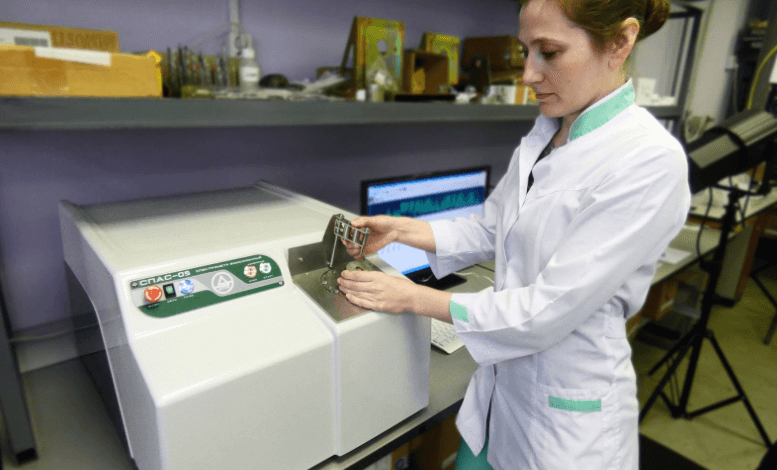Unlocking Elemental Analysis with the Inductively Coupled Plasma Atomic Emission Spectrometer

In the field of analytical chemistry, precision and sensitivity are paramount. Whether it’s testing environmental samples, ensuring food safety, or controlling product quality in manufacturing, scientists rely on sophisticated instruments to measure and monitor elemental compositions. Among the most powerful tools available is the inductively coupled plasma atomic emission spectrometer—a device renowned for its high-throughput, multi-element detection, and remarkable sensitivity.
This article explores the working principles, advantages, applications, and emerging trends surrounding the inductively coupled plasma atomic emission spectrometer, commonly abbreviated as ICP-AES or ICP-OES. If you’re working in a lab setting or interested in advanced analytical instrumentation, this deep dive will help you understand why this technique remains a cornerstone in modern elemental analysis.
What is an Inductively Coupled Plasma Atomic Emission Spectrometer?
An inductively coupled plasma atomic emission spectrometer is a type of analytical instrument used to determine the concentration of elements within a sample. It works by exciting atoms and ions in a high-temperature plasma and measuring the light (emission) they produce. Each element emits light at characteristic wavelengths, and by measuring the intensity of this light, the instrument can determine the amount of that element present.
The plasma used in the process is generated by an argon gas stream energized by a radio frequency (RF) coil. The result is a robust, stable source that can reach temperatures above 10,000 Kelvin—hot enough to atomize and excite nearly every element in the periodic table.
How Does It Work?
The functionality of the inductively coupled plasma atomic emission spectrometer involves a series of precisely orchestrated steps:
- Sample Introduction: The sample, typically in liquid form, is introduced via a nebulizer that transforms it into a fine aerosol.
- Plasma Generation: Argon gas is ionized using RF energy to form an intense, high-temperature plasma.
- Atomization and Excitation: The sample aerosol is carried into the plasma, where the heat breaks down chemical bonds and excites atoms and ions.
- Emission of Light: Excited atoms emit light at specific wavelengths as they return to their ground state.
- Wavelength Dispersion: The emitted light is passed through a monochromator, which separates it into its component wavelengths.
- Detection and Quantification: Detectors measure the intensity of each wavelength, which is directly proportional to the concentration of each element in the sample.
See also: Protecting Homes and Health: The Role of Local Exterminators in Chelmsford
Key Features of an ICP-AES Instrument
Despite its complex operation, the inductively coupled plasma atomic emission spectrometer is designed for high performance and user-friendly operation. Core components typically include:
- RF Generator: Supplies the energy to generate and sustain the plasma.
- Torch and Nebulizer System: Handles sample introduction and maintains plasma stability.
- Optical System: Uses a diffraction grating or prism to disperse emitted light.
- Detector: Often a photomultiplier tube (PMT) or a charge-coupled device (CCD) for multi-element detection.
- Data System: Software for calibration, data analysis, reporting, and quality control.
Advantages of Using an Inductively Coupled Plasma Atomic Emission Spectrometer
Laboratories around the world rely on ICP-AES technology for several compelling reasons:
✅ Multi-Element Analysis
One of the most significant advantages is the ability to simultaneously analyze multiple elements within a single sample, improving efficiency and reducing turnaround time.
✅ Broad Dynamic Range
ICP-AES can measure elements from trace (parts per billion) to major concentrations (percent level), making it versatile across various industries.
✅ High Sensitivity and Precision
The high temperature of the plasma allows for efficient atomization and excitation, resulting in low detection limits and excellent reproducibility.
✅ Minimal Chemical Interference
The stability and energy of the plasma reduce matrix effects and chemical interferences compared to other emission or absorption methods.
✅ Fast Sample Throughput
With automated sample changers and rapid scanning capabilities, modern systems can process hundreds of samples in a single day.
Common Applications of ICP-AES
The inductively coupled plasma atomic emission spectrometer is widely used in both routine and advanced analytical applications, including:
🌿 Environmental Testing
- Monitoring trace metals in drinking water, wastewater, and soil.
- Detection of pollutants such as arsenic, lead, and mercury in environmental samples.
🍲 Food and Agriculture
- Determination of mineral content in food, beverages, and nutritional supplements.
- Soil and fertilizer analysis for crop optimization.
🩺 Pharmaceutical Industry
- Analysis of raw materials and finished drugs for elemental impurities (ICH Q3D compliance).
- Quality control and validation during manufacturing processes.
🏭 Industrial Manufacturing
- Elemental analysis in metals, alloys, ceramics, and glass production.
- Monitoring contaminants in lubricants, fuels, and petrochemical products.
🧬 Academic and Research Institutions
- Advanced material studies.
- Geochemical research and mineral analysis.
ICP-AES vs Other Techniques
It’s worth comparing the inductively coupled plasma atomic emission spectrometer to other analytical instruments:
| Technique | Advantages | Limitations |
| ICP-AES | Fast, multi-element, high sensitivity | Requires argon gas and sample preparation |
| Atomic Absorption (AAS) | Simple and low cost | One element at a time, lower sensitivity |
| ICP-MS | Ultra-trace detection, isotopic analysis | More expensive, susceptible to interferences |
| XRF (X-Ray Fluorescence) | Minimal sample prep, non-destructive | Less sensitive for light elements |
The Future of ICP-AES Technology
As laboratories modernize inductively coupled plasma atomic emission spectrometer is evolving with several trends:
- Miniaturized systems for smaller labs and portable testing units.
- Automated diagnostics and smart software for real-time troubleshooting.
- Green technology integration with lower gas consumption and energy use.
- Enhanced detectors for improved resolution and sensitivity.
- AI-based analytics for faster and more accurate data interpretation.
These innovations are making elemental analysis faster, easier, and more precise than ever before.
Conclusion
The inductively coupled plasma atomic emission spectrometer stands at the forefront of modern elemental analysis. With its unmatched combination of speed, sensitivity, and multi-element capability, it has become an essential instrument across industries ranging from environmental monitoring to pharmaceuticals and beyond.
Whether you are setting up a new lab or upgrading existing technology, investing in a high-quality inductively coupled plasma atomic emission spectrometer is a decision that delivers long-term value and scientific excellence.




